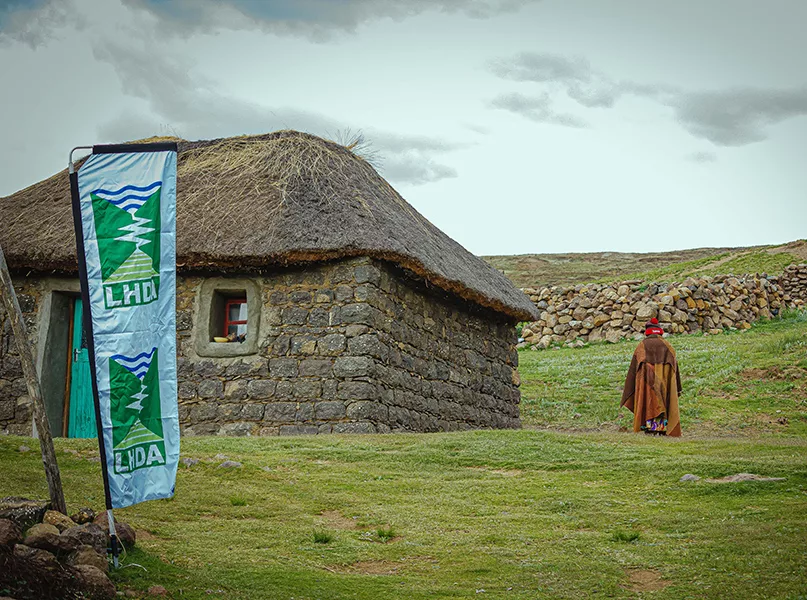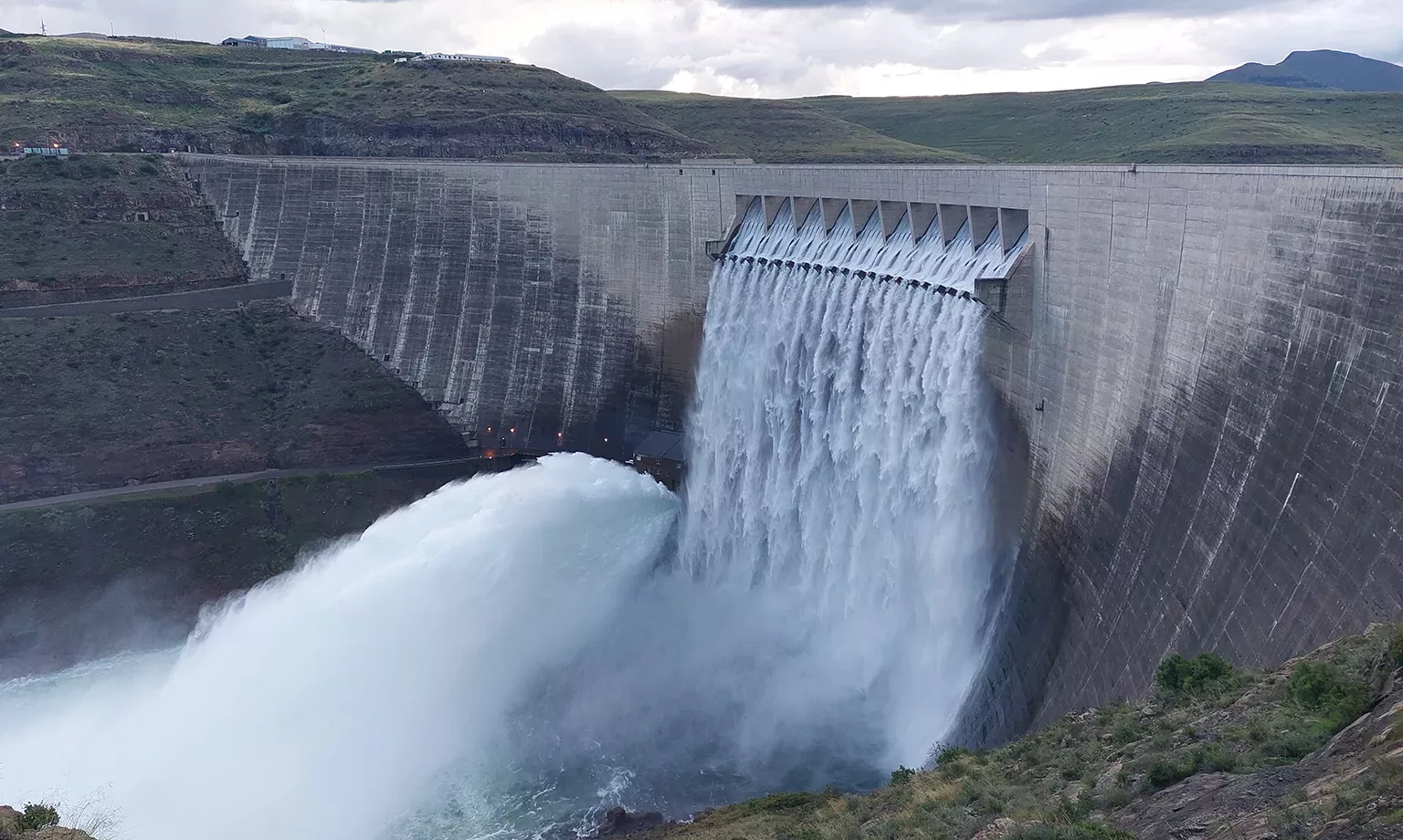Facilitating a comprehensive synthesis between dam technology and energy production, Tente Tente, Chief Executive at the Lesotho Highlands Development Authority, the implementing agency for Lesotho Highlands Water Project, enlightens us about the project’s most recent developments in hydropower and water transfer.
THE EPITOME OF DAM EXPERTISE
Located in a landlocked kingdom surrounded by South Africa (SA), the Lesotho Highlands Water Project (LHWP) resides in the broader Orange-Senqu River Basin, existing as a transboundary resource for SA, Botswana, Lesotho, and Namibia.
As a result, the basin can be utilised as a lucrative opportunity to allocate, manage, and develop its water resources in such a way that it can define and impact geopolitical relations and domestic resources for the region and the extended continent.
In recent years, Lesotho has benefitted greatly from improved roads, telecommunications (telecoms), and power infrastructure, which is further supported by efficient skills transfer and capacity building that enables the country to manage and maintain necessary infrastructure and develop future LHWP phases.
LHWP’s strategic location means that it can have a meaningful impact on the geographical and socioeconomic make-up of the country, particularly within the context of the wider African energy and utilities industry, and further its transition towards sustainability.
“It is one of the most exciting industries to work in due to the global realities of climate change and resource management. Specifically, green resources and green energy have taken centre stage in global, regional, and local discourse,” opens Tente Tente, Chief Executive of the Lesotho Highlands Development Authority (LHDA).
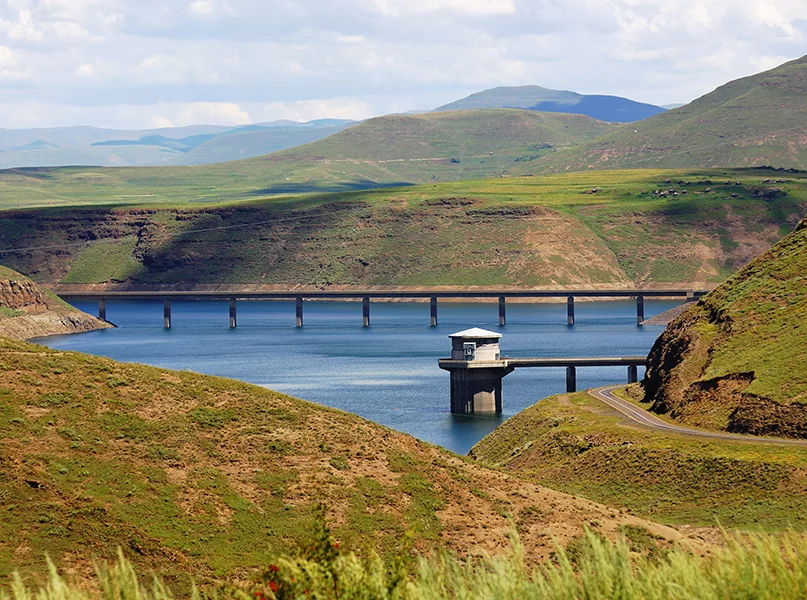
PHASE ONE – UTILISING RESOURCES
Established as a mutually beneficial project in the 1980s, LHWP is a bilateral partnership between the governments of Lesotho and SA and managed by LHDA.
In short, when SA receives much-needed water for the province of Gauteng, Lesotho generates hydropower in the transportation process and subsequently earns royalties from the water that is transferred through the region.
Through a series of dams and tunnels, LHWP envisages that it will ultimately transfer a total of 70 cubic metres (m3) of water per second northwards towards the Vaal River system in Gauteng, whilst utilising the water delivery system to generate hydropower for domestic use in Lesotho and beyond.
In 1986, Lesotho and SA signed the treaty that governed LHWP and committed the two countries to the implementation of the first stage, which was completed in two phases –1A and 1B – consisting of the main tunnel system and hydropower station.
Phase 1A comprised the Katse Dam in the central Maluti Mountains, as well as the Muela Hydropower Station (MHS), with a capacity of 72 megawatts (MW), and the construction of a 45 kilometre (km) transfer tunnel and a 37km delivery tunnel.
Meanwhile, phase 1B involved the construction of the Mohale Dam on the Senqunyane River, with a storage capacity of 958 million m3. Additionally, a 19 metre (m) high Matsoku Wier and 6.4km transfer tunnel were inaugurated.
Overall, the first stage was completed in 2004, and approximately 4.8 billion m3 of water had been transferred by 2007.
“The dams and tunnels built in phase one have greatly expanded the tourism sector in Lesotho, and provided much-needed jobs and opportunities for local entrepreneurs,” Tente explains.
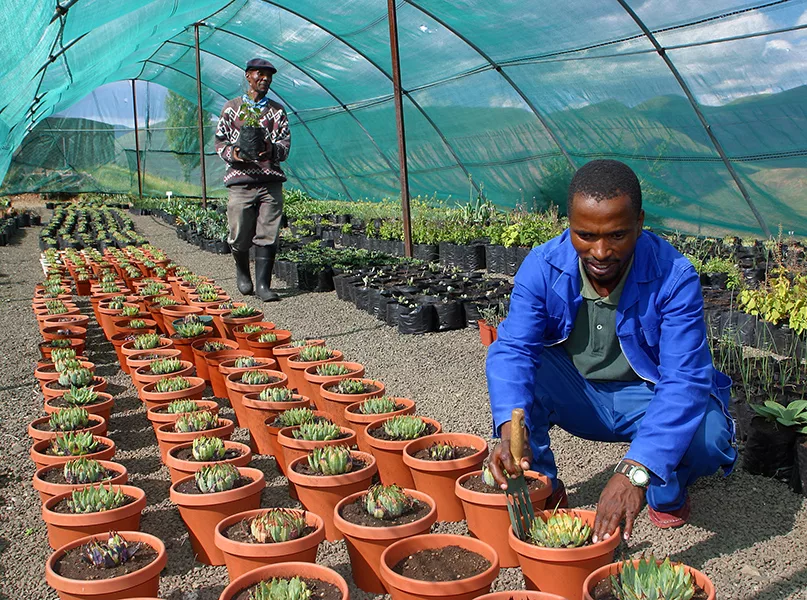
PHASE TWO – TRANSFORMING HYDROPOWER
LHDA greatly celebrates the launch of the second phase of LHWP, which includes the construction of the Polihali Dam, the Polihalli Transfer Tunnel, the Oxbow Hydropower Scheme, and three major bridges. Phase TWO of the LHWP was officially kicked off in May 2023, officiated by Lesotho’s King Letsie III, and SA’s President Cyril Ramaphosa.
These projects are complemented by an advanced infrastructure programme that includes main road networks to the Mokhotlong district and towns, project housing, access roads, as well as power and telecoms infrastructure, and social and environmental programmes to mitigate the impact of the project on surrounding communities.
The awarding of the construction contracts for the Polihali Dam and Polihali Tunnel, alongside the Senqu Bridge, which is the biggest of phase two’s major bridges, took place towards the end of 2022.
“The Polihali Dam will be integral in meeting the demand for water in SA, as it has a storage capacity of 2,325m3. The increased volume of water transferred will simultaneously increase power generation to meet Lesotho’s domestic needs,” Tente urges.
Construction of the Polihali Dam commenced in August 2023, with the construction of a cofferdam to divert the Senqu River (Orange River)into diversion tunnels, leaving the downstream site for the cofferdam and the main Polihali Dam wall to dry and be readied for major works. It consists of two concrete faced rockfill dams (CFRD), the main dam, and a saddle dam. The Polihali Dam will have a height of 164m, with a crest length of 915m, and is slated for completion in 2028.
In counterpart, the Polihali Tunnel facilitates increased water flow from the Polihali resevoir to the Katse reservoir, subsequently increasing the waterflow available for hydropower generation.
The tunnel will be 38m long in total, with a tunnel boring method used to excavate the main tunnel, whilst drilling and blasting will be employed for various access adits and the lake tap.
From the Katse reservoir, water will enter a 45km transfer tunnel via the intake tower, where it will then flow towards the underground MHS. Here, hydropower is generated for Lesotho’s domestic use before flowing through a delivery tunnel towards SA, supplementing its water supply.
The increased volume of water from the Katse reservoir will enable the MHS to operate for longer periods at maximum capacity, therefore increasing the amount of hydropower generated at the plant by approximately 40 percent.
The Oxbow Hydropower Scheme, on the other hand, will have an annual energy output of approximately 33 percent of the current capacity of the MHS, as this station will operate for a specific number of hours per day. However, at full capacity, the station will be able to generate up to 80MW when in operation.
The MHS already produces an independent power source for Lesotho, which was part of the infrastructure built in phase one. However, phase two will increase the current production capacity and is a significant step in the journey to securing an increased power supply to keep up with demand in the enclave.
Finally, three major bridges are also being constructed in phase two of LHWP, namely Senqu, Khubelu, and Mabunyaneng. Upon completion, the bridges will provide access to Mokhotlong across the reservoir and retain connectivity to the national road network, which contains the main route to Lesotho’s capital city, Maseru. The bridges and road networks will improve access to essential services for many Mokhotlong communities and increase economic activity in various sectors, especially ecotourism and agriculture.
“Sound environmental management underpins the sustainability of LHWP, and LHDA is steadfast in its commitment to preserving the integrity of the water sources and rivers that feed LHWP and mitigate its impact on the environment”
Tente Tente, Chief Executive, Lesotho Highlands Development Authority
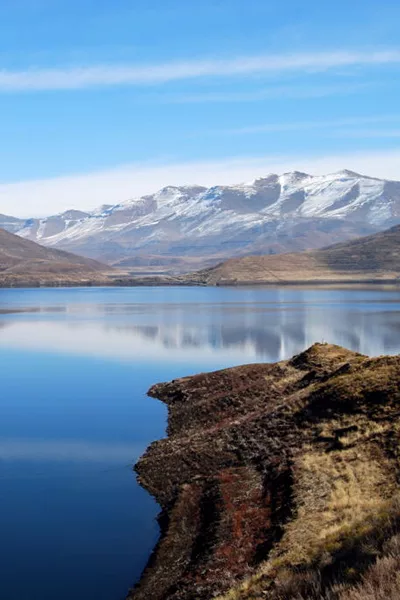
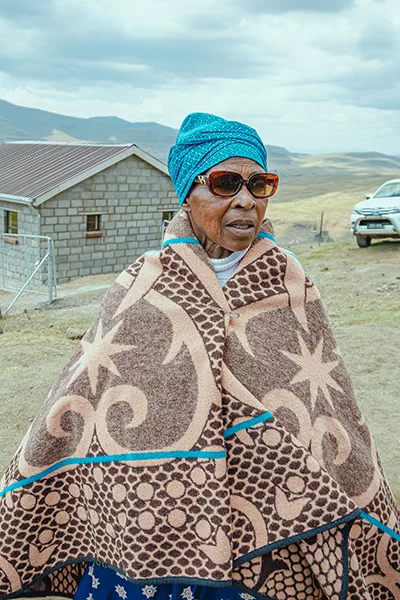
ALLEVIATING DISRUPTION
The implementation of large infrastructure projects such as LHWP can have many disruptive effects on the local environment and the lives of the people in the surrounding area. Phase two of the project is no exception to this.
“The second phase entails social and environmental programmes that will mitigate the impact on communities in the project areas, which will benefit Lesotho in the long-term,” Tente assures.
This includes a ‘bottom-up’ approach to managing the social and environmental impacts, enabling LHWP to work with local communities to specifically understand their preferences for replacement housing, livelihood restoration programmes, and compensation, as well as implementing environmental, cultural, and public health plans to reduce the impact of construction activities.
“The most tangible disruption is the need to resettle people from where they are residing, these individuals mostly being subsistence farmers living on the ancestral coast,” Tente adds.
For example, the construction of the Polihali Dam and the filling of the reservoir will cover over 5,000 hectares of land surrounding the Senqu and Khubela rivers, which necessitates permanent land acquisition and the displacement of households.
To alleviate this disruption, approximately 270 families will be resettled, working closely with community leaders and households to identify all the affected individuals. The first resettlement houses in the Mokhotlong district were handed over in early April 2023, whilst others who are yet to be directly affected have already had their assets registered and will be resettled when their new dwellings have been constructed and all necessary consultations completed.
LHWP also produces direct benefits for the people of Lesotho in various ways, including skills transfer, job creation, and expanded opportunities for Lesotho and South African businesses.
For instance, the project facilitates efficient skills transfer in the use of local architects, engineers, surveyors, and construction companies, who are exposed to large-scale infrastructure development projects throughout both phases of LHWP.
“LHDA has put in place measures to ensure that the recruitment of unskilled labour is done in a transparent manner, through engagement with local leadership and relevant district government departments during the recruitment process,” Tente explains.
All project recruitment practices are conducted in a transparent and equitable manner for the people of Lesotho and SA, with an intent emphasis on sourcing skills locally as far as possible, regionally where needed, and globally for the rarest of expertise.
For the supply of goods and services, preference is given to suppliers including consultants and contractors in Lesotho, SA, SADC member states, and then internationally in that order, provided that the procurement process fosters competitiveness, transparency, cost-effectiveness, and quality.
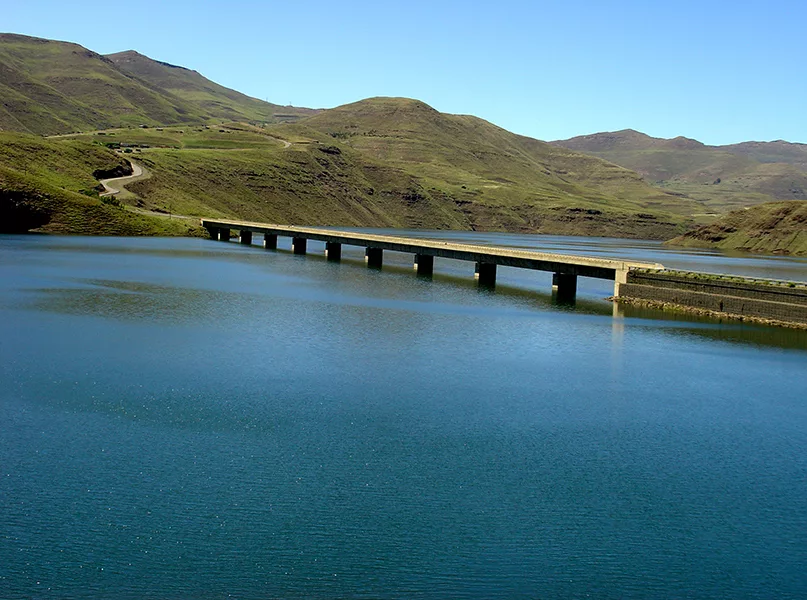
IN THE PIPELINE
As the company looks towards 2024, LHDA is developing the Polihali Tunnel and Dam as phase two continues. The primary goal for the Polihali Tunnel is to have the drill and blast tunnels completed to receive tunnel boring machines (TBMs) that can help achieve critical priorities and milestones, which include having the gate shaft ready for the first impoundment of the Polihali Dam.
For the dam, the focus in the coming months is to complete the construction of the upstream cofferdam to prevent flooding in the main dam works area. Furthermore, the largest of three main bridges, the Senqu River Bridge, is required to be operational by 2026, as the scheduled initial impoundment of the dam will flood the existing Senqu Bridge as well as the base of several low piers.
Projects aside, LHDA will continue to provide support to the Ministry of Health, especially facilities near the project area, to augment a health management information system and improve the provision of healthcare services.
Moreover, the implementation of the livelihood restoration programme will lead to community-based tourism initiatives that will raise awareness of the surrounding area during phase two, including its natural environment and sustainable economic benefits.
“This will facilitate the training of community tour guides to equip them with the relevant skills and knowledge to guide tourists around natural areas and historic buildings, as well as interpret the cultural and natural heritage to generate opportunities for alternative livelihoods and income generation,” expands Tente.
This illustrates how LHWP expertly navigates a balance between efficient hydropower production to meet supply and demand, develop and manage large-scale bulk water infrastructure, and ensure that the local community and natural environment remain unharmed.
